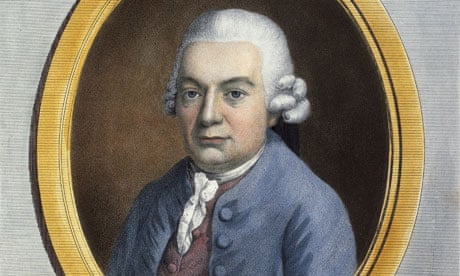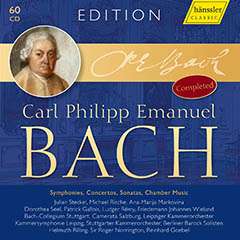The second son of JS Bach, he was a pupil of his father and the University of Leipzig, then he studied in Frankfurt on the Oder holding concerts as a harpsichordist.
From 1738 to 1768, he was the first harpsichordist at the court of Frederick II, first in Ruppin and soon in Berlin. Here he came into contact with the musicians of the Berlin school (Krause, Marpurg, Graun, and others) and with the intellectuals of the capital. From these cultural stimuli was born in him the desire to write a treatise on the harpsichord, which earned him great notoriety for a long time. But relations with the king were not the most satisfactory. Finally, in 1767 Carl won a competition and, from the following year, became director of music in the principal churches of Hamburg, as the successor of Telemann.
Here he remained until his death, very active as a conductor, harpsichordist, and composer, joining the list of the most prominent characters of the city and becoming friends with Klopstock, the great poet, and with Claudius, while also making fruitful contacts with the artists of the leading European centers (Leipzig, Paris, and Vienna). He is considered an exceptional harpsichordist and improviser. Burney confirmed this judgment by defining him as "not only the greatest composer for keyboard instruments that ever existed but also the best player regarding the expression." In the history of music, he is also crucial, however, for the contribution he made to the definitive identification of the sonata-form. He was undoubtedly among the first to give due importance to the development of the themes in the sonata's first movement and to lay the foundations of that dialectical development of the first and second idea, despite not being the inventor of them, as some, on the contrary, believed.
This technique proved to be then
fundamental for all the music of the classical school of Vienna (Haydn, Mozart,
Beethoven). He introduced a strong dose of emotion in his work, to the point of
anticipating the romantics in a few pages: and it is worth noting that he
achieved the best results in instrumental production, while vocal music is
inferior to this. In addition to many sacred and profane vocal works, he
composed 18 symphonies, about 50 harpsichord concertos, two harpsichords concertos, and
wind instruments and orchestra. His chamber production includes a few hundred
sonatas and various pieces for harpsichord.
Composed on commission by Gottfried van Swieten, Austrian
ambassador to Frederick II and a patron very close to the three greats of the
Vienna school, it still remembers due to its setting and the relationship
between "solos" and "all," the form of the big concert. The
musical discourse is very intense and reveals a skilled composer full of ideas:
in the first half, the two main themes, which already have their own and
sufficiently differentiated physiognomy, should be noted.
The Symphony is in three tempos: the first and the last frame
an "Adagio" where the cantabile line of the violins predominates.
------------------------------------
This is perhaps the most interesting of the entire series,
and, here too, we should note a particular affinity with the shape of the big
concert. It is part, like n.2, of the cycle of six symphonies commissioned from
the musician by Gottfried van Swieten. Note in the "Adagio" a
quotation at the bottom of the theme B-a-c-h (B flat, A, C, Si in the German
nomenclature).
In this first Symphony,
we note the search for an individual language, even if the setting is often
reminiscent of the big concert, especially in the juxtaposition of
"solos" and "all." Particularly noteworthy is the stretched
lyric arch of the central "Largo," exciting anticipation of the style
of the Vienna school.
------------------------------------
Concerto in D min. for piano and strings (1748)
A modern and brilliant
piano treatment is personal, while some themes point to the musician as an
interesting precursor of the Vienna school. In many places, however, the direct
descent from tradition manifested in the almost literal quotation of themes or
inflections of works by Johann Sebastian.

:format(webp):mode_rgb():quality(90)/discogs-images/R-9380648-1486845782-9875.jpeg.jpg)

